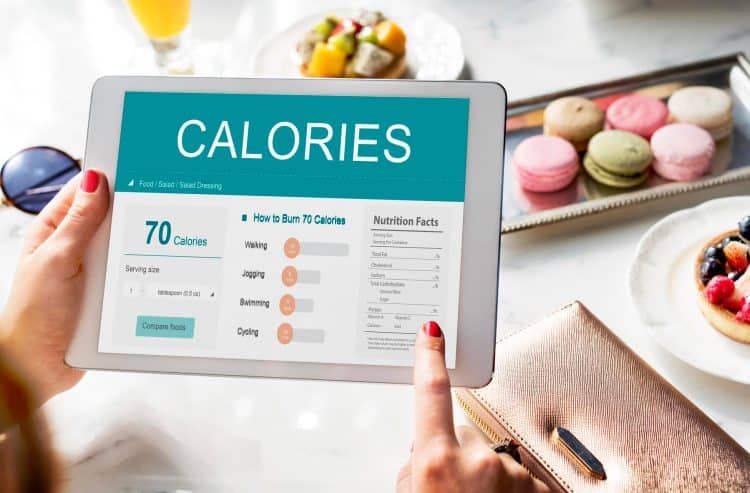Training plateaus are expected if you’re into a consistent workout program. The human body is amazingly adaptable to stress and will quickly adapt to the training challenges you put upon it. What used to be a big deal can soon become old hat. When it does, your body will stop responding.
Plateaus are especially common when people start a fitness program at the start of the year, perhaps as part of their New Year’s resolution. By March, the initial enthusiasm and the novelty may have worn off, and the fitness journey becomes a hard slog.
So, what can you do when the dreaded training plateau stops your progress in its tracks? As a veteran personal trainer and gym owner, I’ve had to battle training plateaus and guide hundreds of clients with strategies to break through to keep making progress.
In this article, I’ll provide you with proven tactics guaranteed to get you back on track and ensure you’re making progress.
How To Break Through A Training Plateau
Tactic #1: Challenge Yourself
There’s no better way to reinvigorate your training, keep yourself motivated, and put your body to the test than to go to the gym with a specific workout challenge. There are plenty of ways to do it. Here are a few ideas:
Level Up Your Fitness: Join our 💪 strong community in Fitness Volt Newsletter. Get daily inspiration, expert-backed workouts, nutrition tips, the latest in strength sports, and the support you need to reach your goals. Subscribe for free!
- Put yourself on the clock: Using approximately 50 percent of your one-rep max (1RM) weight on an exercise (let’s say the overhead dumbbell press), perform a single set of as many reps as possible. Keep going until you simply cannot do another complete rep. You now have 30 seconds to rest. When that time is up, you have precisely 4 minutes and 30 seconds to pump out twice as many reps as you did on that first set.
- 10 x 10: You’ll need a stopwatch for this one; grab a weight about 60% of your one-rep max and pump out 10 good reps. This should take between 25-40 seconds. Now rest for the rest of that first minute. As soon as the minute is up, do another set of 10 reps. Again, you get to rest for whatever time remains in that minute — keep going until the minute is up.
- 100 rep sets: Forget about three sets of 10. Load up 50% of your one-rep max and set your target on achieving a century in one go. Don’t permit yourself to keep going if your form breaks down. If you only get to, let’s say, 61 reps, rest for just 15 seconds and then keep going. You have got to get to 100 reps!
Tactic #2: Try Pre-Exhaustion Training
Pre-exhaustion training is a great way to break out of a training rut and ramp up intensity. It involves temporarily making the target muscle group the weak link to force it to work harder on an exercise.
To understand why pre-exhaustion is so beneficial, let’s consider the example of chest training. Many guys struggle to work the pecs fully because the front delts tend to take over. By pre-exhausting the chest, however, we can negate the effect of the shoulders and put all the pressure on the pecs.
Begin by doing a set of flyes. This will directly work the pecs, making them temporarily weaker than the shoulders. Once you have done eight reps, move directly to the bench press and start pumping out your reps. You won’t be able to go as heavy as if you were doing straight sets, but the effect on your chest will be far more pronounced.
You must go directly from the pre-exhaust exercise to the main one with minimal rest. For this reason, you will have to ensure that the weights for your bench press are all set up before starting.
You can introduce pre-exhaust training for every body part. Doing so is a great way to shock your muscles into new growth.
Check out IFBB Pro Hunter Labrada’s tips for breaking through a training plateau.
Tactic #3: Get a Training Partner
Sometimes, we fall into a rut not because our body has grown accustomed to the stresses of our training but because we have lost the drive. Perhaps without realizing it, we have begun to dial in our workouts without putting in the necessary effort. One way to get yourself out of this mindset is to take on a training partner.
A training partner immediately introduces a level of competition into the mix. Even if you are at different strength levels, you will have a mental impetus to give your best effort on every set, knowing that someone else is watching and taking it all in.
When your motivation is flagging, a partner will boost you up. They will also spot you in an exercise when you need it. If possible, you should train with a person of the opposite sex. It’s been shown that when you do so, you have an inbuilt desire to perform at your best. After all, not many guys want to fail on a set in front of a woman.
Tactic #4: Have a Session with a Personal Trainer
Paying for a certified personal trainer session can be a great way to reinvigorate your training and get you beyond a training plateau. A trainer will be able to cast a critical and knowledgeable eye over what you’ve been doing and may be able to pinpoint a few simple hacks to get you back on track.
A good personal trainer will also provide you with a list of suggestions to reinvigorate your training and keep it interesting. At the same time, they may be able to give you some pointers on your exercise form.
Here’s a 7-day workout plan to smash through a training plateau.
Tactic #5: Use Tracking Technology
There are all sorts of ways available to monitor your fitness training nowadays. For many people, being able to track changes from workout to workout is an excellent source of motivation. Check out the fitness trackers and sports watches that are available. Pay particular attention to the apps that pair with the wrist-worn device; this will give you the analyzable detail to keep you motivated.
Overcoming a Weight Loss Plateau
Weight loss plateaus can be extremely frustrating. You’re doing what you were doing, but suddenly, the pounds are no longer coming off, or, even worse, the needle is budging in the wrong direction.
I’ve worked with hundreds of men and women to achieve their weight loss goals. This section will reveal some proven strategies to overcome a weight loss plateau. But first, I’d like to address a common theme I see among weight loss-focused individuals — setting unrealistic goals.
The media and misleading marketers have created an unrealistic expectation of weight loss. Losing five, ten, or more pounds a week is perceived as being extremely possible. So, if you are only losing one pound, it can seem like you are failing.
However, losing a pound of fat per week is an excellent accomplishment. If you can do that consistently, you’ll be 50 pounds lighter a year from now!
Realistic goals will serve you best in the long run, both physically and mentally. Remember, the scale might not move much every time you step on it, but you’re losing inches, and maybe you are only losing a pound or two each week, which is actually pretty impressive. If this sounds like you? Then you should just stay the course because you’re crushing it!
Level Up Your Fitness: Join our 💪 strong community in Fitness Volt Newsletter. Get daily inspiration, expert-backed workouts, nutrition tips, the latest in strength sports, and the support you need to reach your goals. Subscribe for free!
On the other hand, if you are falling short of your goals, hitting a weight loss plateau, or gaining weight, here are a few solutions that might help get you back on track:
1. Be Honest With Yourself About Food
I can’t stress enough how important honesty is when examining where we might be faltering and what we are eating. The quality of food and how much you eat are critical to achieving consistent fat loss.
You must achieve a negative calorie balance so your body can use its fat reserves to meet its energy needs. Unfortunately, a tremendous emotional component is involved in tracking what we eat. We are probably a bit guilty of making our diets appear better to ourselves and others than they really are at times.
That raises the question of whether we sometimes intentionally lie to ourselves about what we eat. Or are we subconsciously guarding our emotional state by not tracking or ignoring how many carbs we consume daily?
It’s probably a combination of both, which is okay; we are only human and trying to overcome a lifetime of eating habits and our emotional ties to them.
One way to shift away from this behavior is by paying attention to mindful eating, focusing on nutrition, and holding yourself accountable for your choices.
2. Hidden Carbohydrates Will Hinder Your Weight Loss Results
If you’re not reading food labels or eat out often, you can be caught off guard by hidden carbs that can add up quickly and exceed your daily carb limit.
Many whole foods and everyday foods can have your daily carb limit in a single serving.
You want to watch out for the following foods:
- Salad Dressings: Dressings can be full of added carbs and sugars. Most people use more than the suggested serving sizes, so ensure you read the labels and count accurately based on your intake.
- Nuts: Watch out for nuts with higher carb content and limit your intake to small portions if you decide to eat nuts of any type. Tasty Cashews, for example, contain more than 8g of carbs per 1oz. serving. If you’re going to eat nuts, make sure to stick to low-carb nuts like macadamias or pumpkin seeds and limit your portions to avoid overdoing the carbs.
- Sauces and Gravies: Many of these contain sugar and flour, especially if you are eating out. For example, Chinese food and barbecue sauces contain sugar and thickening flour.
- Starchy Vegetables: Not all veggies are the same, and many, especially those grown underground and those that contain a lot of starch, are generally much higher in carbs. For example, one medium-baked sweet potato has 20g of carbs, and a regular potato has over 50g of carbs. Even some of our healthy vegetable favorites, like broccoli or Brussels sprouts, can add up quickly if your portions are too big.
- Meats: Often processed packaged deli meats like ham, turkey, sausage, and bacon usually have extra sugar and starch added, so read the ingredient labels and avoid meat with extra carbs.
- Fruits: I suggest avoiding fruit entirely since most fruits are packed with natural sugar and can add up quickly, even in tiny portions. A single banana has over 25g of carbs. If you are going to eat fruit, stick to berries, which typically contain less than 5g of carbs per serving.
3. Counting Calories and Tracking Macros Helps
Tracking your food intake and daily macros helps you stay consistent and accountable. The numbers never lie, so tracking macro helps pinpoint where you might fall short.
For some, paying attention to just carb intake works for a while, but at some point, you will need to look a bit closer at what you’re eating overall regarding calories to have the best success.
A macro tracker will help you determine your macro percentages and calorie targets. Here are three of the best calorie-counting apps available right now:
4. Are You Eating Too Often?
Excessive snacking will raise your blood sugar and create an insulin response, keeping you from a semi-fast state between meals where your body uses fat stores for fuel instead of the food you’re snacking on between meals.
If you find you’re always hungry between meals, you may consider looking at your fat intake, as you may not be getting enough fat to stay satiated between meals.
4 Hacks to Avoid a Plateau
Here are a half dozen hacks based on my experience with hundreds of men and women who have successfully overcome weight loss plateaus.
#1: Take Your Measurements
Before beginning your weight loss journey, record your body weight and the measurements around your waist. If possible, you should also have your body fat percentage calculated. Do these again at the end of every 14 days. That way, you will have concrete evidence from your own body of what your hard work is doing for you.
#2: Stay Hydrated
You must increase your water intake on a weight loss plan. As you lower your carb intake, your kidneys will start to squeeze out extra water. If you don’t increase your intake, you will start to experience muscle cramps and headaches. Set your goal to drink 0.5 gallons (2 liters) daily.
#3: Don’t Give Up
If you happen to succumb to your carb weakness, don’t view it as the end of the world. Simply get up, dust yourself, and carry on.
Remember that you are not a robot. So, rather than expecting every workout to be perfect and every meal to be clean, be realistic. For example, if you’re eating five meals per day, which I recommend, you are doing well if 31 of those 35 weekly meals are clean.
#4: Get Plenty of Sleep
Poor sleep is associated with increased stress. It will also cause blood sugar irregularity and interfere with the metabolic changes that your body is going through.
Sleep is a vital ingredient in the body’s rehabilitative process. That’s when your body heals, repairs muscle tissue, and fine-tunes your internal engine.
For those who have difficulty getting to sleep, try creating an atmosphere where you feel most at ease. Dim the lights, ensure the room is at a comfortable temperature, and leave your electronic devices out of the bedroom — they are not a good sleeping partner.
Conclusion
You now have an arsenal of tactics to help get your training back on track when you run into a training plateau. Use them one at a time and monitor their effect. If one tactic doesn’t do the trick, move on to the next one. Before you know it, you’ll re-find your training mojo and return to achieving the results your hard work deserves.
Article Updates Timeline:
Our editorial team experts constantly update the articles with new information & research, ensuring you always have access to the latest and most reliable information.
January 26, 2024
Written By
Steve Theunissen, PT
Edited By
Vidur Saini
Reviewed By
Tom Miller, CSCS














